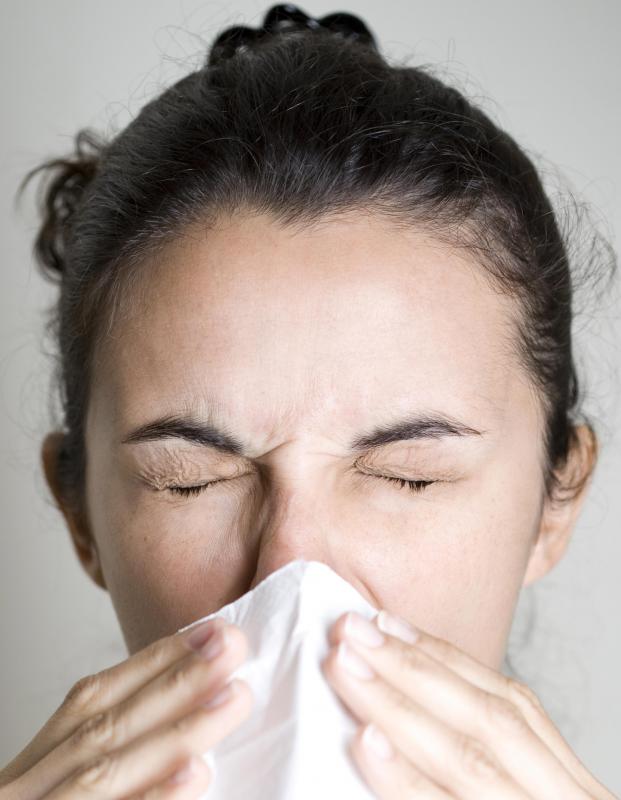At WiseGEEK, we're committed to delivering accurate, trustworthy information. Our expert-authored content is rigorously fact-checked and sourced from credible authorities. Discover how we uphold the highest standards in providing you with reliable knowledge.
What is Hayfever?
Hayfever is the common name given to allergic reactions caused by the pollen of a number of different plants. The name comes from the fact that the season when hay is made is also the season where airborne pollen is most predominant in most regions of the world, and so is the time of year when symptoms of this condition are most often seen. There are a number of plants best known for causing these symptoms, but virtually any wind-pollinating plant can cause an allergic reaction.
The most common causes of this condition tend to be grasses, with a wide range of people allergic to some very common grasses. Of note are both timothy grass, or Phleum pratense, and ryegrass, or Lolium sp.. Common weed species are also responsible for some of the worst cases of hayfever each year. Particular nuisances include species like plantain, or Plantago, ragweed, or Abrosia, mugwort, or Artemisia, sorrel, or Rumex, and nettle, or Urticaceae. A number of common trees may also provoke symptoms in sensitive individuals, including willow, poplar, hazel, alder, cedar, and birch.
The symptoms of this condition vary from person to person. Some people may suffer a runny nose or sinus congestion. Others may have itchy eyes and sneezing.

The time of year that hayfever sets in will differ depending on the region, the weather, and what species the sufferer is allergic to. The majority of wind-borne pollinators come into their full pollination sometime beginning in mid-spring and continuing through the summer. Some species, however, may enter full pollination in fall or winter, and some may have extremely short or extremely long windows. Depending on the species one is allergic to, living in the same place may afford the opportunity to predict when symptoms will be particularly bad, allowing a sufferer to prepare through medication, staying indoors, or leaving the area temporarily.

Since the pollen that causes hayfever is carried on the wind, meteorological conditions play a large part in how bad a season might be for a person. For example, in damp or wet weather, the majority of pollen will simply be washed away or kept close to the ground, so that a reaction is unlikely. In cooler weather pollen won’t spread nearly as far, leading to reduced symptoms. On hot, dry days, however, especially breezy days, pollen will spread far and wide, exacerbating symptoms for all sufferers.

It is easy, as well, to mistake hayfever allergies for simple dust allergies. Often dust allergies become worst in the same environmental conditions as hayfever, making it sometimes difficult to determine what is causing the allergic reaction. At the same time, many people who are allergic to pollen are also allergic to dust, so an onset of this condition may be a combined reaction to both dust and pollen freely floating in the air.
Treatment of hayfever primarily involves trying to reduce exposure to the pollen that causes the onset of symptoms. The easiest way to do this is simply to stay indoors during hayfever season, especially on the hottest, driest, and breeziest days. Some sort of indoor filter can help immensely, either a filter specifically designed to take airborne particles out of the air, or a simple air conditioner. Regular bathing, washing of clothes, and nasal irrigation can also help eliminate residual allergens. For those who can’t limit their exposure to the allergens, symptoms can be reduced by taking mediators like antihistamines, which help prevent the worst of the body’s allergic response.
AS FEATURED ON:
AS FEATURED ON:













Discuss this Article
Post your comments